2. FY06 PROGRESS IN BABAR AT PEP-II
by Hassan Jawahery, Gregory P. Dubois-Felsmann, and Bill
Wisniewski
Appendix B Self-Evaluation FY2006
Return to Table of
Contents
Overview
Over this past year, the BABAR experiment has
continued its pursuit of heavy flavor physics generating
a spectacular array of new results in topics ranging
from time-dependent and direct CP asymmetries in decays
of B mesons, rare and semileptonic B decays, charm and
tau physics. The experiment has also produced a number
of new results from the study of electron-positron
annihilation at Center-of-Mass (CM) energies near the
Υ(4S) resonance, as well as CM energies well below the
Υ(4S) via initial state radiation reaction. BaBar also
reported the first observation of a rare two-photon
annihilation process. The detector continues to perform
extremely well, with an operational efficiency of 97%.
Since the start of running in October 1999, BABAR has
accumulated an integrated luminosity of 349 fb-1 on the
Y(4S ) resonance, corresponding to 384 million
B-meson
pairs, and an additional 37 fb-1 taken 40 MeV below the
resonance. During the Run 5 that ended on August 21,
2006 the detector recorded an integrated luminosity of
148.6 fb-1. The analysis of the BaBar data has so far
yielded 242 papers, published or submitted for
publication. The collaboration submitted 114 papers to
the International Conference on High Energy Physics in
Moscow (ICHEP 2006), which were summarized in 24 invited
presentations by BaBar collaborators, including two
plenary talks by Roger Barlow of University of
Manchester, and Robert Kowalewski of University of
Victoria. These presentations covered the full spectrum
of heavy flavor physics that is reachable at the Υ(4S)
resonance with the B factories. Clearly, PEPII and BABAR
have been highly productive in recording,
reconstructing, analyzing and simulating data, more than
fulfilling expectations for the promise for exciting
physics from the project.
BABAR Physics Highlights
The BABAR B physics program, based on this enormous
data sample, encompasses three main goals: (1) study of
CP violation in B meson decays and tests of the CKM
paradigm through measurement of a complete set of
CP-violating asymmetries and CP conserving observables
in B meson decays; (2) search for the effects of physics
beyond the Standard Model, through a systematic
exploration of rare decay processes; and (3) detailed
studies to elucidate the dynamics of processes involving
heavy quarks. The first two goals focus on testing the
Standard Model, measuring its parameters, and searching
for the effects of new physics, while the third goal is
designed to build a solid foundation by elucidating the
interplay between electroweak and strong interactions in
heavy-quark processes.
During the past year, substantial progress has
been made in all three areas. A large number of
measurements have been updated with the full data sample
leading to more precise measurements. In addition a
number of new observations and measurement were
reported. A new improved measurement was presented of
sin2β, the time-dependent CP violation parameter in B
decays into charmonium modes, including B0 →
J /ψ KS0 and B0
→ J /ψ
KL0. In Figure 1, is shown the
decay time evolution of the event sample, as well as the
time-dependence of the measured CP asymmetry, the
amplitude of which is related to the CP parameter sin2β.
The new BaBar measurement sin 2β= 0.710 ▒ 0.034 ▒ 0.019
and the measurement reported by the Belle Collaboration
at the KEKB machine, sin2β= 0.642 ▒ 0.031▒ 0.017, with
an average of sin 2β= 0.672 ▒ 0.026 represents the most
precisely determined parameter of the CKM matrix. The
consistency of the sin2β measurement with indirect
constraints on this parameter from interpretations of
other observables in the K meson, charm and B decays
(see Figure 2 below), has now led to the conclusion that
the CKM matrix is the primary mechanism responsible for
the observed CP violating effects in nature. In addition
to providing a powerful test of the CKM mechanism, the
sin2β measurment from the charmonium modes serves as a
benchmark for the measured CP asymmetries in penguin
dominated decay channels, which are sensitive to the
effects of New Physics.

Figure 1: a) Distribution of flavor tagged
candidate B0 and
B0 decays in
final states J/ψKs 0,ψ
(2S)Ks
0 χc1Ks
0, and ηcKs0, b) time dependence of the CP raw
asymmetry. Figures c) and d) are the corresponding
distributions for the CP conjugate mode J/ψKL0.
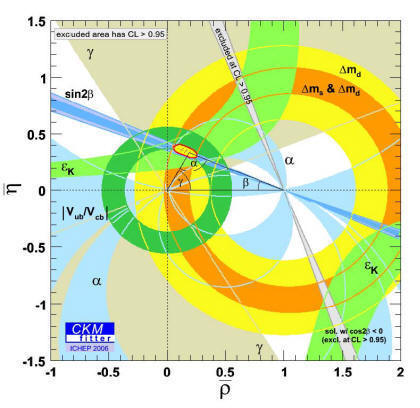
Figure 2: Compilation of indirect and direct
measurements of the unitarity triangle (UT). The plot
shows the allowed region for the apex of UT, obtained
from indirect constraints from εK from
CP
violation in kaon decays, |Vub/Vcb| and Δmd
, Δms from rare B decays and mixing.
The allowed ub /region from CP violating
measurements in B decays (the overlap of the blue
regions) is consistent with the indirect constraints on
UT.
From the outset, a major goal of the BaBar
experiment has been to perform a test of the CKM
paradigm by over-constraining the CKM unitarity
triangle. This requires a complete set of measurements
of the three angles α, β and γ, and the sides of the unitarity triangle. With the increasing size of the
available data sample, determination of the angles α and
γ, which require measurements of the rates and CP
asymmetries in a large set of rare processes, have now
become possible. The angle α is related to
time-dependent asymmetries in two-body modes involving
b
→ u transitions such as B0 → π+
π− , B0 →
ρπ , and B0
→
ρ+ ρ− . However, the additional
complication for many of these channels is the
significant contribution of a second important decay
mechanism, involving a so-called penguin diagram. The
presence of the penguin diagram introduces a theoretical
uncertainty (Δα) in extraction of the angle α, which can
ultimately be removed when precise measurements are
performed of the rates and CP asymmetries of all isospin
partners of the primary decays. An indicator of the size
of the penguin contribution in each case is the ratio of
branching fractions such as, B(B0 → π0
π0)
/ B(B0 → π+
π−) , and B(B0
→ ρ0
ρ0) /
B(B0 →
ρ+
ρ−)
, which in lieu of a full set of
measurements, provide constraints on the magnitude of Δα. In the B→ππ system, where the full set of isospin
partners has now been measured, albeit some with large
experimental uncertainties, the penguin contributions
are shown to be large, providing only a very loose bound
on the penguin pollution- |Δαππ|<.40ο at 90%
c.l. A major advance in the determination of the angle α
was made by the discovery at BaBar that the decay mode B0
→ ρ0 ρ0 is highly
suppressed compared to the decay B0 → ρ+
ρ−
, thus indicating a comparatively small
contamination from the penguin amplitude in this
channel, with a constraint of ~11o on |Δαρρ|.
BaBar also observed that the decay B0 →ρ+
ρ−
is essentially a pure CP eigenstate, thus allowing
for a clean determination of time-dependent CP
asymmetries in this mode. A further important
development in the study of this channel this year, has
been the first evidence by BaBar of the decay B0
→ ρ0 ρ0
. At the ICHEP
2006, the BaBar collaboration also presented an update
of time–dependent CP asymmetry measurements in B0
→ρ+ ρ−
channel. The observed
Δt distributions for tagged samples of B0
→ ρ+ ρ−
candidates and the corresponding visible asymmetry are
shown in Figure 3. Combined with results on decays B0
→ ρ0 ρ0
and
B+ → ρ+ ρ0
, an isospin analysis of the ρρ
modes has been performed constraining the angle α in the
range ∈[84,114]O . Combining all information on α,
including constraints from decays B→ππ and B→ρπ and
measurements from 11 the Belle collaboration, the CKM fitter group
finds α =[93 ▒9]O
(see Figure 4). The
observation of the decay B0 → ρ0
ρ0 opens the possibility of measuring
time-dependent CP asymmetry in this channel, which in
future will allow for significant reduction of the
theoretical uncertainties in this channel.
 Figure 3: Δt distribution for events enriched
in B0 →ρ+ρ−
signal
events for B0 -tagged (upper) and
B0
-tagged (middle) events. The dashed line
represents the sum of backgrounds and the solid line the
sum of signal and backgrounds. The time-dependent CP
asymmetry is shown in the lower panel along with the
projected fit result.
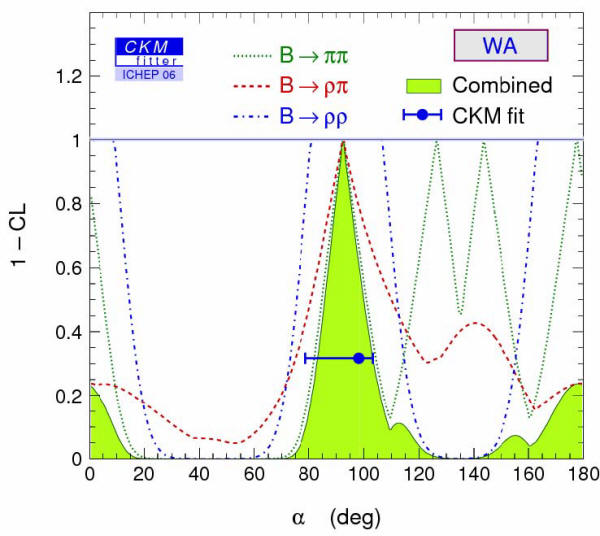
Figure 4: Combined BABAR result (shaded region)
for direct determination of the unitarity angle α, based
on measurements of CP asymmetry in B →
ππ , B → ρπ , and
B → ρρ . The point with error bars is the predicted
value for α from indirect measurements of CKM matrix
elements.
Studies have also continued on measurements of
the angle γ. These involve measurements of the rates and
direct CP violation in decay modes such as B−→
D(*)0 K(*)−
, which
receives contributions from two competing diagrams, one
of which depends on the phase γ through the bĂu
transition. In situations where the D meson is observed
in a final state that is common to both the D0
and D0
meson, interference between the
two contributing diagrams can result in direct CP
violation. A number of techniques have been pursued in
identifying the appropriate decay final states for this
measurement, including observation of D decays in CP
eigenstates (the GLW method) or through doubly
Cabibbo-suppressed decays (the ADS method).
Alternatively, the D0 decay is identified in
a common multibody final state such as D0 →KS0π+π
− (the GGSZ
method), requiring a Dalitz analysis of the final state.
The GGSZ analysis is emerging as the most promising
approach for measurements of γ. The current BaBar
analysis yields a measurement of γ= 92 ▒ 41▒11▒12(deg) ,
where the 1st and 2nd errors are
the statistical and systematic uncertainties
respectively, and the last error is the uncertainty due
to imperfect treatment of the resonance structure of the
three body final state (the so-called Dalitz error). In
all cases, the sensitivity to the phase γ depends on the
ratio rB of the suppressed to dominant decay mechanism,
which must be determined from the data along with the
angle γ. Measurements using all three methods have been
updated with the full data over the past year.
Over the past year r studies have continued of
the BaBar data aimed at improving the measurements of
the sides of the CKM unitarity triangle, in particular
measurements of the magnitudes of the CKM elements
|Vcb|, and |Vub|. Progress on this front increasingly
depends on improved knowledge of the dynamics of the B
meson decays and on the ability to disentangle the weak
and strong interaction effects. The measurement of the
|Vcb| has already reached an accuracy of about 2%,
thanks to significant advances in measurements of the
properties of semileptonic B decays as well as the
radiative b→sγ process. The combined analysis of b→clν
and b→sγ processes provides, in addition to |Vcb|,
information on parameters of B decay dynamics, including
the b quark mass and the b quark Fermi motion in the B
meson system, which are important for extraction of
|Vub| from charmless semileptonic decays. Two sets of
analyses have been carried out for determination of
|Vub|: (1) measurement of the partial rate for inclusive
charmless semileptonic decay b→ulν in a region of
phase-space that minimizes the contamination from the
dominant b→clν decays; and (2) measurement of the
differential decay rates in exclusive decays such as
B→πlν and
B→ρlν. In both approaches, significant
theoretical uncertainties are involved in extraction of
|Vub| from the measured decay rates. The systematic
uncertainties in the two methods are however,
complementary, hence in principle a comparison between
the two sets of measurements will provide an important
cross-check on the two approaches. A compilation of
these results is shown in Figure 5. Inclusive
measurements have already reached a precision of ~7%,
whereas the exclusive results have an overall accuracy
of ~20%. A useful comparison of the two sets of
measurements therefore awaits improvement measurements
from exclusive modes, which may indeed be possible if
the promised improved knowledge of the form factors from
Lattice QCD is achieved.
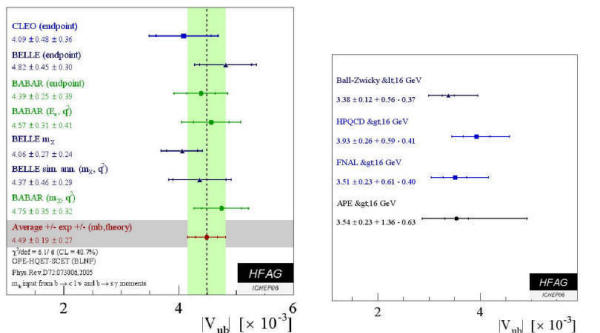
Figure 5: Compilation of available measurements
of the quark mixing element |Vub| using the
inclusive and exclusive charmless semileptonic B decays.
The combined statistical and theoretical error on
present world average is ~7% for measurements from
inclusive decays and ~20% from exclusive decays.
In the past year, one of the most important
events in heavy flavor physics was the observation of Bs0⇔Bs0
oscillation by the CDF and D0 experiments at Tevatron,
leading to a measurement of the mass difference Δms. The
ratio Δmd/Δms provides a measurement of the ratio |Vtd/
Vts/ to an accuracy of ~4%, including theoretical
uncertainties. A measurement of |Vtd/Vts/ can also be
obtained from the ratio B(B→dγ)/B(b→sγ), involving a
complementary set of theoretical uncertainties. At the
ICHEP 2006, BaBar presented measurements of the
branching ratios B(B+→ρ+γ), B(B0→ρ0γ),
and a limit on the branching ratio B(B0→ωγ).
Figure 6 shows the distribution of the beam-constrained
mass for the candidate samples, indicating clear signals
at the B mass. An estimate of the ratio of the CKM
elements |Vtd/Vts/ is obtained from the ratio of
branching ratios B(B→(ρ/ω)γ)/ B(B→K*γ). Α
compilation of the results from BaBar and Belle and
comparison with the value extracted from measurements of
B0 mixing is shown in Figure 7. The
consistency of |Vtd/Vts/ extracted from mixing
measurements and the radiative decays, when comparable
accuracies have been achieved, is an important test of
the internal consistency of the Standard Model. Whereas
the mixing measurement is essentially close to its
ultimate accuracy, significant improvements are still
expected in measurements of the radiative decays from
future B factory data. This will remain an important
area of BaBar physics to watch in the next few years.
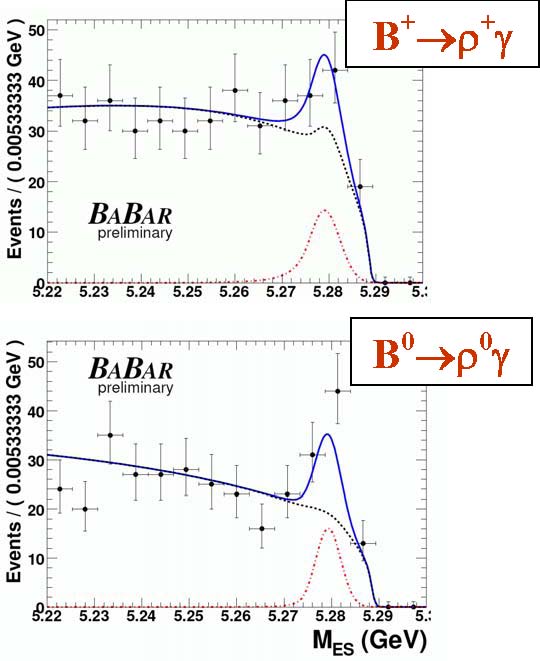
Figure 6: Distribution of B+ →ρ+γ
and B0 →ρ0γ candidates in
beam-constrained mass MES. For each plot the signal
fraction is enhanced by selection on other variables
used in the fit to the entire candidate sample. The
points are data, the solid line is the total Probability
Distribution Function (PDF) used in the fit to the data
and the dark (light dot-dashed) line is the background
(signal) only PDF.
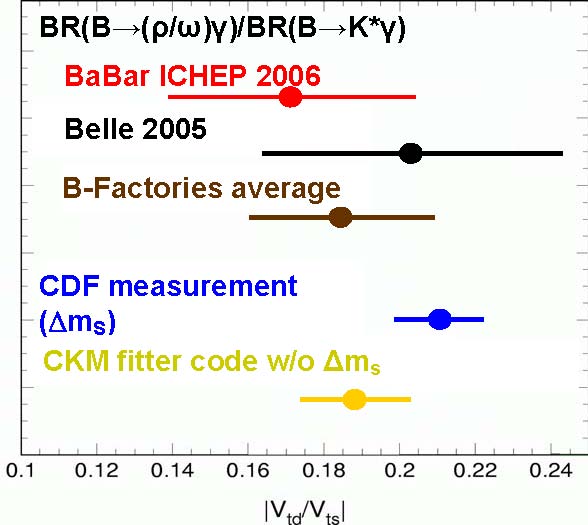
Figure 7: Compilation of all experimental
results on |Vtd/Vts|.
As already noted, the CKM unitarity triangle is
a convenient summary of knowledge of the charge weak
sector of the Standard Model. From a suite of
measurements of CP violation in kaon decays, the B
lifetime and Vcb from semileptonc b → clν
decays, and Δmd
and Δms from Bd0
and
Bs0
mixing, it is possible to infer indirectly the
shape of the unitarity triangle and the location of its
apex. The plot in Figure 2 shows with the 90% CL allowed
region the present knowledge of the unitarity triangle
as inferred from this suite of indirect constraints.
Measurements of CP violation in B decays allows
determination of the interior angles α, β, and
γ and
comparison of the preferred region with that from
indirect measurements.. As can be seen, the fit to the
direct CP violation measurements shows an allowed region
that is both comparable in size to and consistent with
that from the indirect measurements.
A key element of the BaBar physics program is
searching for the effects of New Physics through rare
decays of B mesons. A relatively clean set of
observables sensitive to the effects of New Physics are
time-dependent CP violating parameters in the so-called
b → sss penguin diagrams containing virtual quarks and vector bosons.
While such modes, including B0 → φK
0,
B0 → η′K0 and a number of related
channels, should show the same CP asymmetry as the
benchmark charmonium result for sin 2β , they are also
sensitive to new physics at high mass scales beyond
those directly produced by present-day experiments.
BABAR reported a comprehensive set of results on CP
violation studies in these channels at ICHEP 2006 in
Moscow, based on most of the data collected by BaBar up
to the conference. Most of the results have now been
updated with the full data set of Runs 1-5 and are in
preparation for submissions to journals. A particularly
noteworthy result is the measurement of CP violation in
the decay B0 → η′K0, which
represents the first observation of time-dependent CP
violation in a charmless decay.
Figure 8 shows examples of kinematic variables
used in selection of B0 → η'
Ks
0 decays, and the distribution of the
time-evolution and visible CP asymmetry of the sample.

Figure 8: Distribution for the
energy-substituted mass mES and energy
difference
Δ= E−Ebeam for a sample of
B0 →η'
Ks0 (upper) signal events,
Δt distributions for B0 -tagged (lower (a))
and B0 -tagged (lower (b)) events, and
visible asymmetry (lower (c)) with overlaid fit results.
A full compilation of measurements of CP asymmetries
in b →sss penguin modes is shown in Figure 9, including
the results presented by the Belle collaboration. The
average value 0.52 ▒0.05 for the product of the
amplitude of the sine (Sf) term in the time-dependent
asymmetry and the CP eigenvalue for the final state
(ηCP ) should be equal to the well-measured value of sin
2β = 0.672 ▒0.026 . Intriguingly, this is not the case at
present, with a discrepancy at the level of 2.5 standard
deviations. Clearly this remains a result to watch in
the future as more data is accumulated, since a
difference between the charmonium and penguin modes is
exactly the kind of signature one would expect from new
physics beyond the Standard Model.
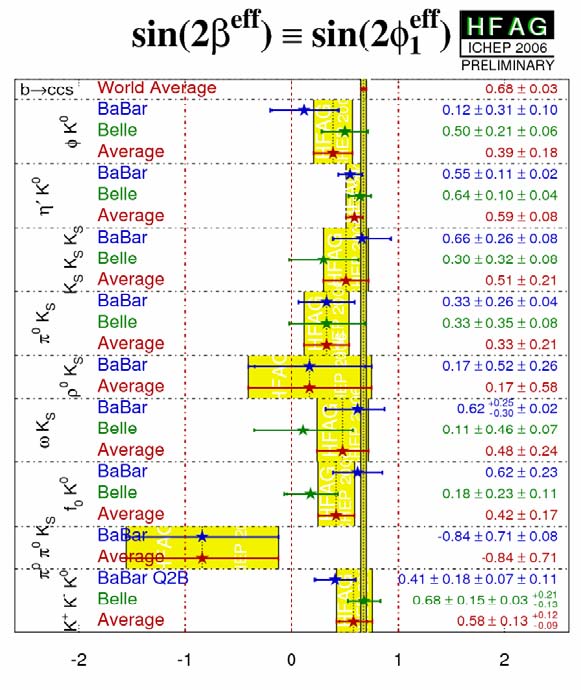
Figure 9: Compilation of fit results for the
amplitude of the sine ( Sf ) term in the
time-dependent asymmetry multiplied by the CP eigenvalue
for the final state ( ηCP ) as obtained for
various b → sss channels by
BABAR and Belle. The average
over the eight channels, 0.52 ▒ 0.05 , is about 2.5
standard deviations below the precision measurement of
sin 2β obtained in the charmonium modes, sin 2β= 0.672 ▒
0.026.
BaBar’s ability to search for New Physics
effects extends to rare processes in decays of charmed
mesons and tau lepton. In the charm sector, a major
effort is underway to measure the D0 ⇔ D
0 oscillation frequency which, contrary to the
neutral B system, is highly suppressed in the Standard
Model; typical theoretical estimates of the D mixing
rate are in the range O(10-6-10-4 ). Observation of D mixing even at the current level of
experimental sensitivity would represent a departure
from the Standard Model and a sign of New Physics
contributions. The mixing process is parameterized in
terms of the quantities: x=Δm /
Γ and y = 2ΔΓ
/ Γ ,
which respectively
measure the mass and lifetime differences of
the two CP eigenstates in the neutral D system. The
mixing rate is defined as RM =(x2 + y2
) / 2 and is extracted from the time
evolution of flavor-tagged D0 decays. BaBar
has presented results on D mixing rate by examining D0
decays into CP-even eigenstates, semileptonic D decays
and the decay D0→K-π+.
In the past year the BaBar collaboration presented new
results using decay final channels, D0→K-π+
π0 and D0→K-π+
π−
π+ , based an analysis of the
Run 1-4 data sample (230 fb-1). These
analyses yield a measurement of the mixing rate RM
= (0.020+0.011
-0.010)% , leading to an upper bound of RM<0.042%
at 95% confidence level. This
analysis rules out the hypothesis of no mixing at 2.1%
confidence level. Clearly, this measurement will
continue to be of great interest and its evolution with
the future data will be closely watched.
Finally, it should be noted that physics reach
of the B Factory program spans a broad range of topics
in heavy flavor physics, including beauty, charm, and tau physics, through a variety of production mechanisms,
including e+ e− annihilation,
two-photon, and initial-state radiation events. Among
the highlights of BaBar results, outside the weak
interaction physics described above, has been the
ongoing discovery of members of strange charm meson (Ds)
family, high-mass states decaying to charm or charmonium
mesons and lately an excited charm baryon state. At the
ICHEP 2006 conference in Moscow, the BaBar collaboration
presented the first observation of an excited charm
baryon (css) ( Ω* c ) in the
radiative decay Ωc 0y , using the
run 1-4 data set of 230 fb-1. Figure
10 shows the invariant mass distributions of Ω*c
→Ωc0y
candidates, for four decay channels of Ωc baryon that
were reconstructed in this analysis. The combined set
yields a 5.2 σ signal for an excited charm baryon state
at a mass difference M Ω*c − M
Ω0c =
70.8 ▒1.0 ▒1.1 MeV.
 At the ICHEP meeting, the BaBar
collaboration also presented new results from further
investigation of the Y(4260) state (seen in J / ψπ+π−
), discovered at BaBar in 2005 in initial-state
radiation events and a new structure seen in ψ (2S)ππ.
The Y(4260) state, has now been confirmed by the CLEO
experiment at CESR and the Belle experiment at KEKB.
These states are
the latest in a series of new structures
observed in the past few years at the B factories, which
include hybrid states, molecules, as well as
conventional charmonium states. Interpretation of these
states is the subject of a lively debate in the
community and is likely to lead to important insights in
QCD dynamics.
In summary, the analysis of BaBar data has so
far led to major findings, including establishment of
the CKM matrix as the primary mechanism responsible for
observed CP violating effects in nature. In the next two
years, the experiment is poised to increase its data
sample by a factor of 2.5 with a very rich physics
prospect. A key goal of the program is to search for the
effects of new physics, through a large number of
observables. In addition, a major legacy of the
experiment is expected to be precision determination of
the charge weak sector of the Standard Model, which will
serve as a benchmark for testing predictions of models
of new physics in the LHC era.
BABAR Detector
The BABAR
Detector completed the second half of
its fifth data run on 21 August 2006. BaBar recorded
148.6 fb-1 in total during Run 5 (Figure D1).
This data was recorded with 97% efficiency. Two
components contribute to the ~3% inefficiency: downtime
due to equipment failure, which has averaged about 1.7%
for Run 5, and dead time due to inefficiencies in the
data acquisition system. Downtime due to equipment
failure has been minimized because of the robustness of
the detector design and construction, the emphasis on
quick repair by the system experts, and the attention of
the personnel on shift acquiring the data. Minimization
of dead time has been, and continues to be, a key focus
of effort for the experiment. Many of the upgrades that
have recently come to fruition have dealt with
minimization of dead time in the face of ever-increasing
luminosity. Luminosity is now four times design. The
data acquisition system (DAQ) will need to cope with
luminosities seven times design, prompting increased
attention to backgrounds by the Machine Detector
Interface group (MDI), to DAQ bottlenecks in all the
detector systems, and to event selection (triggering).
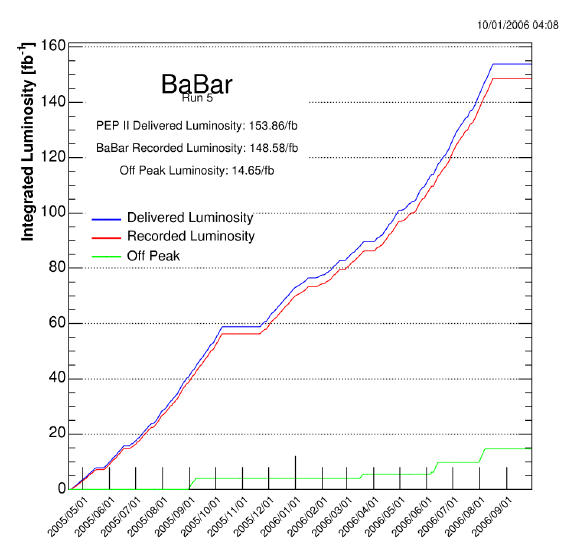 Figure D1. BABAR integrated luminosity (Run 5)
The five-week October down period that began
the 2006 fiscal year, provided a brief interruption in
Run 5 to address a couple of accelerator and safety
issues. Advantage was taken of this time to install in
the detector the Drift Chamber (DCH) electronics
upgrade, as well as to prepare for the Instrumented Flux
Return (IFR) upgrade work that began at the end of Run
5.
The BABAR
Machine Detector Interface group
continues to understand detector backgrounds using the
detailed Monte Carlo simulation (GEANT4) of the
interaction region that it developed. The MDI group has
developed online tools for determining the horizontal
and longitudinal beam size at the interaction point, as
well for measuring the crossing angle of the beams at
the IP, on a real time basis. This has proved to be very
useful to the machine physicists and accelerator
operators. BABAR members contributed heavily to the
process of identifying the location of IR region gas
burst instability using the detector’s background
devices (radiation sensing PIN diodes) in conjunction
with PEP-II’s vacuum measuring devices.
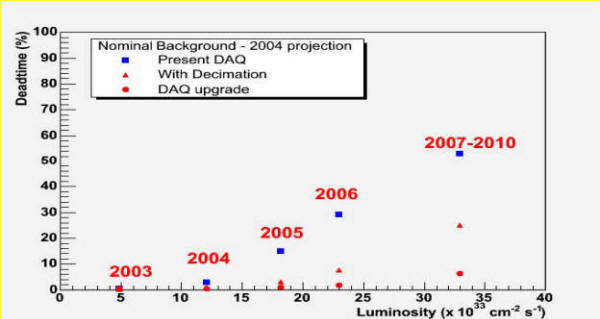
Figure D2: Dead-time due to DCH readout. Blue squares
show extrapolation of original front end electronics;
red triangles show extrapolation with phase 1 upgrade;
red circles show extrapolation with phase 2 upgrade.
For the past couple of years the Drift Chamber
team has focused on upgrading the front-end readout
electronics. Beam related backgrounds clog the data
pathway from the on-detector electronics to the
off-detector readout modules, producing readout dead
time (Figure D2). Fragments produced in the interaction
of radiative bhabha event electrons and positrons with
beam line elements dominate these backgrounds that grow
with luminosity. The fix for this problem has been
implemented in two steps. In the first phase, the
programmable array front end chips were reprogrammed to
send half of the waveforms. This reduced the readout
dead time during Run 5a to acceptable levels (i.e., of
order a per cent or less), although the limits of this
implementation were apparent in dead-time increases that
accompanied unusually high backgrounds.
In the second phase, the feature extraction
algorithms, which are currently executed in the
off-detector readout modules, were moved into modern
programmable array chips located in the on-detector
electronics. The new electronics board, which uses a
modern field programmable gate array and programmable
read-only memories, was installed during the October
2005 shutdown. This board supports downloading new
feature extraction algorithms. Run 5b was thus begun
using the algorithms of the first phase. By
mid-February, the off-detector feature extraction
algorithms had been downloaded to the new on-detector
electronics boards and were in routine use. A weakness
of this new system is its sensitivity to radiation-
induced upsets because of its location next to the beam
line. This is mitigated by frequently reloading the
algorithms while checking data consistency and
integrity. Dead time dropped on installation of the
feature extraction algorithms. Dead time at the highest
luminosity projected through the lifetime of the
experiment will remain acceptably small.
The Silicon Vertex Tracker (SVT) has performed
well during the past year. Effort has been devoted to
developing software tools that allow readout of sections
of the SVT that have been isolated by local chip damage.
Studies are in process to understand the future rate
limitations of the SVT DAQ, and ways to mitigate these
limitations. Possible mitigations include full readout
of chips from both ends, which reduces the amount of
data flowing through individual readout chips; frequent
adjustment of thresholds to limit radiation damage
induced effects that increase the number of noise hits;
shrinking the readout time window to reduce the data
transmitted; and increasing the clock rate of the
readout, if this is possible. It is hoped that the first
three of these will reduce the size of the readout
stream enough to make the fourth unnecessary. Success
here will limit dead time to acceptable levels for the
lifetime of the experiment.
The DIRC, which uses Cherenkov light to
identify charged particle species, has performed well
this year. The Electromagnetic Calorimeter has performed
without problems. Effort continued to be focused this
year on improvements to the electromagnetic shower
reconstruction code and calibration scheme. The
improvements are now ready for use.
The Forward Endcap Resistive Plate Chambers
(RPCs) performed efficiently during the fifth data run.
The additional steel added during last year’s down has
decreased beam-related background rates in the outer
layers of the forward end cap by over a factor of three.
This has permitted all layers to be utilized, allowing
the realization of the full benefits of the summer 2002
upgrade: increased μ identification efficiency with
improved π rejection. In order to decrease the
sensitivity to backgrounds of portions of the RPCs
closest to the beam line, which increase directly with
future luminosity improvements, electronics have been
developed to operate the RPCs in avalanche mode, rather
than streamer mode. Prototype electronics were installed
during the October shutdown in three RPCs to test this
scheme. These electronics performed well, lowering the
charge seen by the RPCs by a factor of 5. Efficiency has
increased for these RPCs while occupancy levels have
remained acceptable. Improvements in efficiency for the
regions closer to the beam line can be seen in Figure
D3. Studies where water vapor is introduced into the RPC
gas have been successfully completed. This boosts the
RPC efficiency and has been implemented in all forward
end-cap chambers.
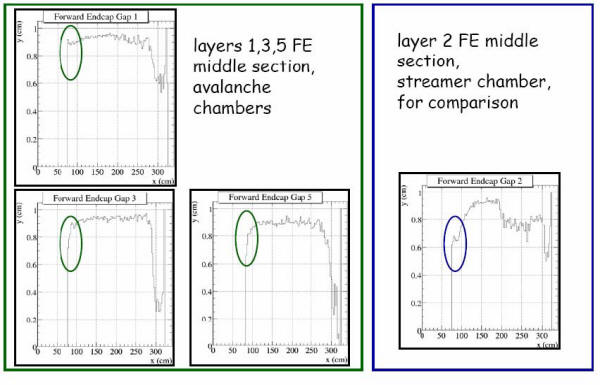 Figure D3. Efficiency across end-cap RPC layers. The
left part of the figure shows chambers that have been
fitted with preamplifiers and run in avalanche more. The
right part of the figure shows a chamber not modified.
The circles call attention to the regions closer to the
beam line where higher backgrounds limit performance.
Performance is clearly enhanced in the chambers run in
avalanche mode.
In December 2002 the collaboration selected
Limited Streamer Tubes (LSTs) as the replacement
technology for the RPCs of the barrel portion of the
IFR. Installation of twelve layers of LSTs into the top
and bottom sextants of the barrel IFR was completed in
mid-October 2004. Brass 7/8” absorber replaces the
barrel RPCs in six layers in these sextants to improve
the π/μ rejection ratio. The barrel LSTs have performed
well during Run 5. The performance improvements can be
seen in Figure D4.
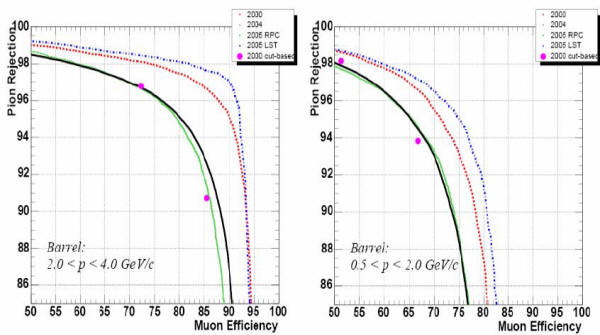 Figure D4.
Improvements in efficiency for identification of muons
and rejection of pions are shown as a function of time.
The contrast between barrel sextants equipped with RPCs
(green line) and the sextants with LSTs (dotted blue) is
stark. Comparing the LSTs with the performance of the
RPC system when it was new (red dots) shows that the IFR
upgrade with LSTs and additional brass provides improved
performance compared to the initial performance (and
design) of the detector.
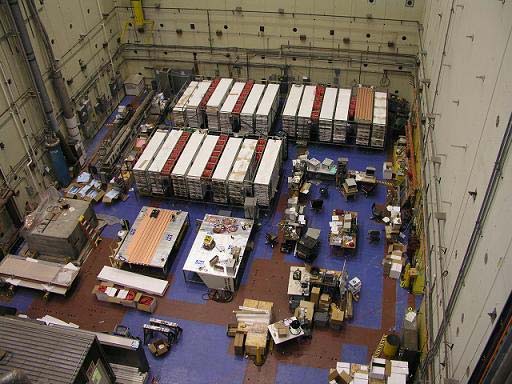
Figure D5: LSTs being prepared for installation in
autumn 2006.
The LSTs for the remaining four sextants of the
barrel IFR have been under continuous test since 2004
(Figure D5). Design and fabrication of tooling for the
installation of the remaining four sextants of the
barrel IFR was completed just in time for the shut-down
that started at the end of Run 5 and continues until
January 2007. Installation of the first of these four
sextants was completed at the end of FY2006 (Figs. D6,
D7).
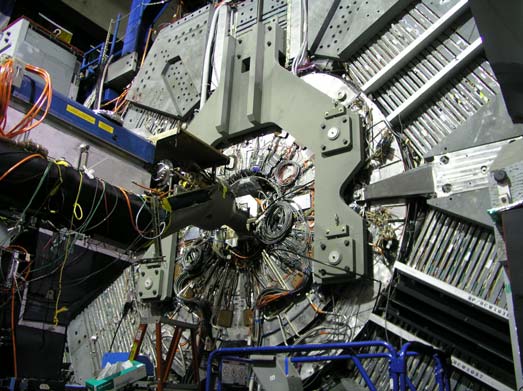
Figure D6. Front end of the detector with EMC
load transfer fixture (yoke: inverted y frame hanging
from top detector)
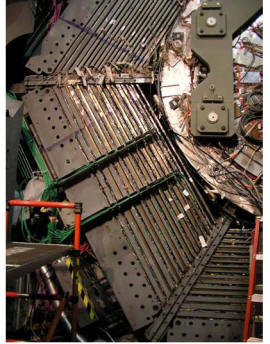
Figure D7. The first of four sextants (left,
diagonal) of LSTs and brass have been installed.
The trigger has been upgraded to handle higher
luminosity. Additional information from the DCH is used
to ensure that events originate close to the interaction
point along the beam line. The upgraded system has
performed well during Run 5. Long-standing sources of
dead time have been eliminated from the trigger system.
Investigations into effects on the efficiency of
accepting key final states are in progress at this time.
They are aimed at tightening trigger conditions to limit
DAQ dead time, should this become necessary, as
luminosity increases.
PEP-II is continuing to operate in the
“trickle-injection” mode first introduced during Run 4.
The modifications introduced to the data acquisition
system to support this are working well, and the data
acquisition system is being steadily refined to handle
the increasing luminosity. As a result, BABAR
continues
to maintain its record of recording for physics analysis
approximately 97% of the data produced by the
accelerator.
During FY06, approval and funding were received
from the BABAR
International Finance Committee for an
upgrade of the event building, filtering, and quality
monitoring farm in the online system, and work began on
this as soon as data-taking ended in August. The cluster
of sixty Intel/Linux servers that had supported these
tasks since 2002 is being replaced with a new group of
fifty Sun AMD/Linux servers with dual dual-core Opteron
processors, while the Cisco network switch that supports
event building is being replaced with an upgraded
version. These changes are necessary to support the
higher event rates and larger events that are expected
to come with the beam current and luminosity increases
of the next two years of BABAR’s running.
Computing
The new Computing Model deployed by BABAR
at
the end of 2003, based on the storage of event data in
an ensemble of ROOT files rather than in an
Objectivity/DB object-oriented database, has continued
to work well and contribute to the experiment’s ability
to perform many parallel analyses on very recently
acquired data. BABAR
computing continues to be carried
out across six major “Tier A” sites – SLAC, CC-IN2P3 in
France, RAL in the UK, GridKa in Germany, and Padova and
CNAF-Bologna in Italy – as well as a larger network of
university- and lab-based simulation production sites,
all coordinated from SLAC.
During the previous year, the move to the new
computing model was completed with the first
comprehensive reprocessing of the BABAR
data sample
entirely within the new model. All of the data from Runs
1-4 were reprocessed with the same software release used
for the new data from Run 5, in the course of which it
proved possible to recover several fb-1 of
data that had previously had problems of various sorts.
For the 126 fb-1 of data from Runs 1-3,
originally reconstructed within the Objectivity-based
model and converted to the ROOT data format of the new
model, this was the first reconstruction directly to
ROOT files.
In conjunction with the reprocessing, new
simulated data samples covering the whole of BABAR
running were also generated. In the course of this “SP8”
Monte Carlo simulation cycle, thus far over nine billion
simulated events have been produced, with about two
billion remaining to generate, a task that should be
complete at the end of 2006. A substantial fraction of
the simulated data is now being generated using
“Grid”-based computing systems in the UK and Italy, and
this fraction is expected to increase in the future.
Many of the results presented at the ICHEP 2006
conference were based on the reprocessed data sample,
demonstrating the success of the effort. Data from Run 5
were included in physics analyses within ten days of
their being acquired in IR-2, following reconstruction,
data quality check, and skimming. Because of the
reprocessing, for the past year data have been processed
and simulated at over twice the rate at which new data
were being acquired from the detector, demonstrating
that the data production pipeline is already capable of
dealing with the higher rates expected in the next two
years.
In the course of normal data processing, events
acquired from the online computing system are first
passed through a calibration procedure hosted at SLAC,
updating the calibration database with the latest
conditions of the hardware systems. The raw data are
then transferred to the Tier-A center at Padova (Padua),
where one of several available PC-based Linux farms are
used to apply an initial physics filter and actually
reconstruct the events. (Additional farms at Padova are
available for performing reprocessing of other data in
parallel with the reconstruction of newly acquired
events.) Typically within 24 hours of data acquisition,
both steps are complete and the data shipped back to
SLAC for a quality assurance evaluation. The resulting
fast access to physics quality data both ensures a
continuous monitoring of detector performance and
permits data to enter analysis soon after it is
acquired.
Following initial reconstruction in Padova, all
data are passed through a skim process, which applies
over 200 separate physics preselections to the data
sample and allows much faster and efficient physics
analysis of the full data sets. These selections vary in
selectivity over four orders of magnitude, allowing many
analyses to work with datasets much smaller than the
full unselected sample. Specific selections of the data
are made uniquely available at individual BABAR
Tier-A
sites at SLAC and in Europe. One of the major goals of
the new computing model has been achieved, in that the
length of time required to produce a skim from the
complete data sample is now short enough that it is
possible to demonstrate the capability for central
production of new skims several times per year. During
Run 5 three separate skim cycles were carried out, with
a fourth now just beginning. This enhances the group’s
ability to quickly attack new areas of physics interest.
This ability to make highly efficient use of
acquired data – the high precision and sensitivity
achieved per unit of luminosity – outlined above in the
discussion of physics results – has been further
enhanced by the reprocessing and by the flexibility of
the computing model.
The reprocessing, resimulation, and skimming in
FY06 have produced approximately 400 TB of data, all of
which is stored for archival purposes in the HPSS mass
storage system at SLAC. Specific skims, as noted above,
are kept on disk at their assigned Tier-A sites,
including SLAC.
Current BABAR
software releases are now
virtually free of direct dependencies on Objectivity for
the nonevent databases that are still required, and
Objectivity is required at run time for only one of
these databases – the “conditions database”. The work
remaining to completely eliminate Objectivity even in
that one remaining application is proceeding rapidly at
this time and is expected to be complete in early 2007.
The complete elimination of Objectivity will allow
reducing cost and complexity for establishing the BABAR
computing environment at new sites, from universities to
laptops.
In preparing for Run 6, improvements are being
introduced to track reconstruction which can be applied
to the new data acquired in FY07 and beyond, as well as
retroactively to the results of the recent reprocessing,
thanks to the enhanced “mini” event data format from the
revised computing model. Initial indications are that
this will lead to further improvements in physics
productivity and precision in the coming year.
BABAR Future Plans
The goal of the experiment is to accumulate a
full sample of 1000 fb-1 by September 2008.
The collaboration and the laboratory have explored the
physics case for this rich B physics program, with many
important new results that can be anticipated by
quadrupling the sample currently used for analysis. The
program rests on two main scientific goals. The first is
to provide precision measurements of the weak
interaction couplings of beauty quarks that will test at
a fundamental level the Standard Model of particle
physics through a series of over-constraining
measurements. The couplings of quarks to the weak
interaction, i.e., the elements of the quark mixing
matrix, are as basic to the theory as the quark masses.
The B Factory will substantially improve the precision
of our knowledge of both the magnitude of these
couplings and the single complex phase that appears to
describe all observed matter-antimatter differences,
which are referred to as CP-violating asymmetries. Over
the next three years, additional independent
measurements of the quark couplings will achieve a
threshold of precision that will, for the first time,
allow these new methods to provide further stringent
consistency tests. The combination of existing and new
constraints will provide a powerful test of the Standard
Model.
The second goal is to study CP violation and
rare decays in beauty, charm, and tau decays for
indirect evidence of New Physics beyond the Standard
Model. Such searches are possible only because of the
ever increasing precision with which the Standard Model
can be understood, thereby providing a benchmark against
which the additional effects of New Physics can be
distinguished. Searches for New Physics are of
fundamental interest if either convincing new effects
are seen or limits can be substantially improved. In
general, CP violation and rare processes are sensitive
to New Physics at high mass scales through their quantum
contributions to penguin diagrams, which may involve
virtual production of particles from either the Standard
Model or New Physics. If there are deviations from the
Standard Model, a first exciting look will be given at
the properties of New Physics even before it is directly
observed at the LHC. However, if no deviations are seen,
the B Factory program will still provide all important
evidence to rule out whole classes of theoretical
explanations for new phenomenon discovered at the LHC.
The B Factory and the LHC are thus complementary tools
in the search for New Physics, with the B Factory
providing a powerful legacy of constraints on the nature
of any New Physics directly produced at the LHC. |